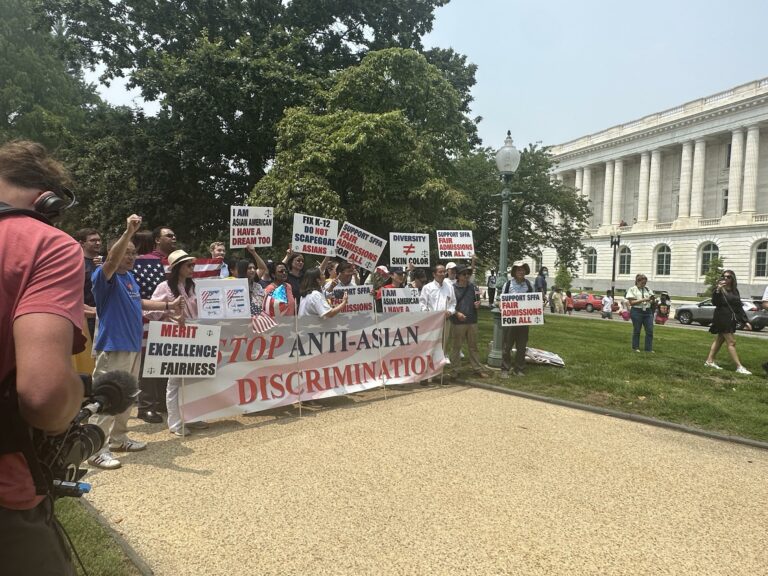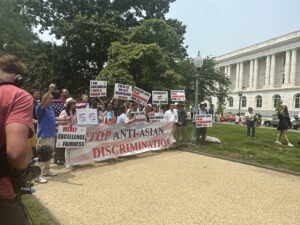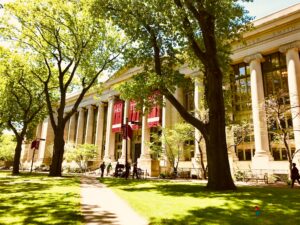Fox News: Supreme Court puts universities on notice, but missed an opportunity

Universities take note — the Supreme Court will not tolerate the fanatical and wanton reliance on race that has become the norm in admissions.
In Students for Fair Admissions v. University of North Carolina, the Supreme Court held that Harvard and North Carolina had gone too far with racial preferences in weighing student applicants. Too many universities, said Chief Justice John Roberts in his majority opinion, “have concluded, wrongly, that the touchstone of an individual’s identity is not challenges bested, skills built, or lessons learned but the color of their skin. Our constitutional history does not tolerate that choice.”
While this is a key win for individual rights, the court did not go far enough. The court should have held that race can play no role in university admissions whatsoever. Instead, the court has opted to prop up a feeble precedent that leaves the door ajar for ongoing discrimination.
While the Supreme Court added a few supporting beams to its rickety case law on racial preferences in admissions, it should have torn down the whole structure.
In 2003, the Supreme Court decided Grutter v. Bollinger, holding that universities can consider race in admission decisions (which is another way of saying they can discriminate based on race) to build student body diversity.
The court said universities have a compelling interest in the “educational benefits that flow from” racial diversity, which — according to the court — promotes “cross-racial understanding” and combats racial stereotypes “because nonminority students learn there is no ‘minority viewpoint.’” How ensuring admission to racial minorities promotes viewpoint diversity when there is “no minority viewpoint” is a mystery.
But the court set limits. Universities cannot set quotas, they cannot racially balance the student population, and they can only resort to racial preferences if race-neutral methods of achieving a diverse student body won’t do the job. And there’s a time limit. Once racial preferences are no longer needed to achieve diversity, they must be retired.
These safeguards may sound strict, but Grutter also told courts to “presume” universities are acting in “good faith.” In other words, if the universities say they’re playing nice and plaintiffs can’t prove otherwise, the courts shrug and move on.
Grutter also declined to resolve how much diversity is enough diversity. Universities can discriminate until they reach a mystical “critical mass” of racial minorities. Once again, courts defer to universities on the question of how much is too much.
Grutter’s presumption of “good faith” is an unsettling echo of Plessy v. Ferguson, the case in which the Supreme Court upheld racial segregation on trains by accepting the government’s claim to be acting “in good faith for the promotion of the public good, and not for the annoyance or oppression of a particular class.”
Despite Grutter’s blustering about its “strict” scrutiny of university admissions, the decision was little more than an indulgent wag of the finger that has left universities free to discriminate. The Supreme Court’s failure to fire this sleepy sentinel of equal rights will allow universities to continue to put skin color above achievement.
Yet Harvard and North Carolina’s wanton discrimination was blatant enough to raise the alarm even under Gruttter. Both universities rely on race in student admissions to a startling degree.
For example, an Asian American student in the highest tier of academic performance has less chance at Harvard admission than an African American in the fourth-lowest tier. An African American student in the top tier has well over a 50% chance of admission, while an Asian American in the same tier has about a 10% chance. North Carolina is similar.
These universities are not alone; many schools view Harvard’s approach as the gold standard for admissions.
Trial evidence indicated that neither Harvard nor North Carolina had considered race-neutral alternatives as Grutter requires (subject to that pesky presumption of good faith, of course). Plaintiffs, for instance, demonstrated that Harvard could increase racial diversity if it jettisoned preferences for legacy candidates (children of alumni, donors and faculty), who are overwhelmingly White and wealthy. Likewise, an increased focus on socioeconomically disadvantaged students would lead naturally to greater racial diversity. Neither university has bothered to try these alternatives.
According to Chief Justice Roberts, Harvard and UNC have engaged in unlawful stereotyping by assuming skin color says something about the content of someone’s character. As the chief justice put it, “The entire point of the Equal Protection Clause is that treating someone differently because of their skin color is not like treating someone differently because they are from a city or from a suburb, or because they play the violin poorly or well.”
All said, Students for Fair Admissions is a step forward toward racial equality, if not the leap that many court watchers hoped for. It puts universities on notice that courts will not just take universities at their word that they are behaving themselves. It also patches up a few of Grutter’s more glaring flaws. For example, it rejects the idea that universities are owed unlimited deference in their racial gerrymandering as Grutter had implied.
If courts do begin to take Grutter more seriously, as Thursday’s decision does, we could see universities slink toward more covert methods, such as proxy discrimination — where schools adopt “neutral” methods such as zip code quotas with the intent to discriminate. This is already happening in admission-only K-12 schools.
For example, at Thomas Jefferson High School, school administrators adjusted their admissions process in an underhanded effort to reduce Asian American admission. A lawsuit against the high school brought by my employer, Pacific Legal Foundation, will soon ask the Supreme Court how to address this discrimination by proxy.
Students for Fair Admissions offers hope that the Supreme Court will continue to side with genuine equality.
This op-ed was originally published at Fox News on June 29, 2023.









